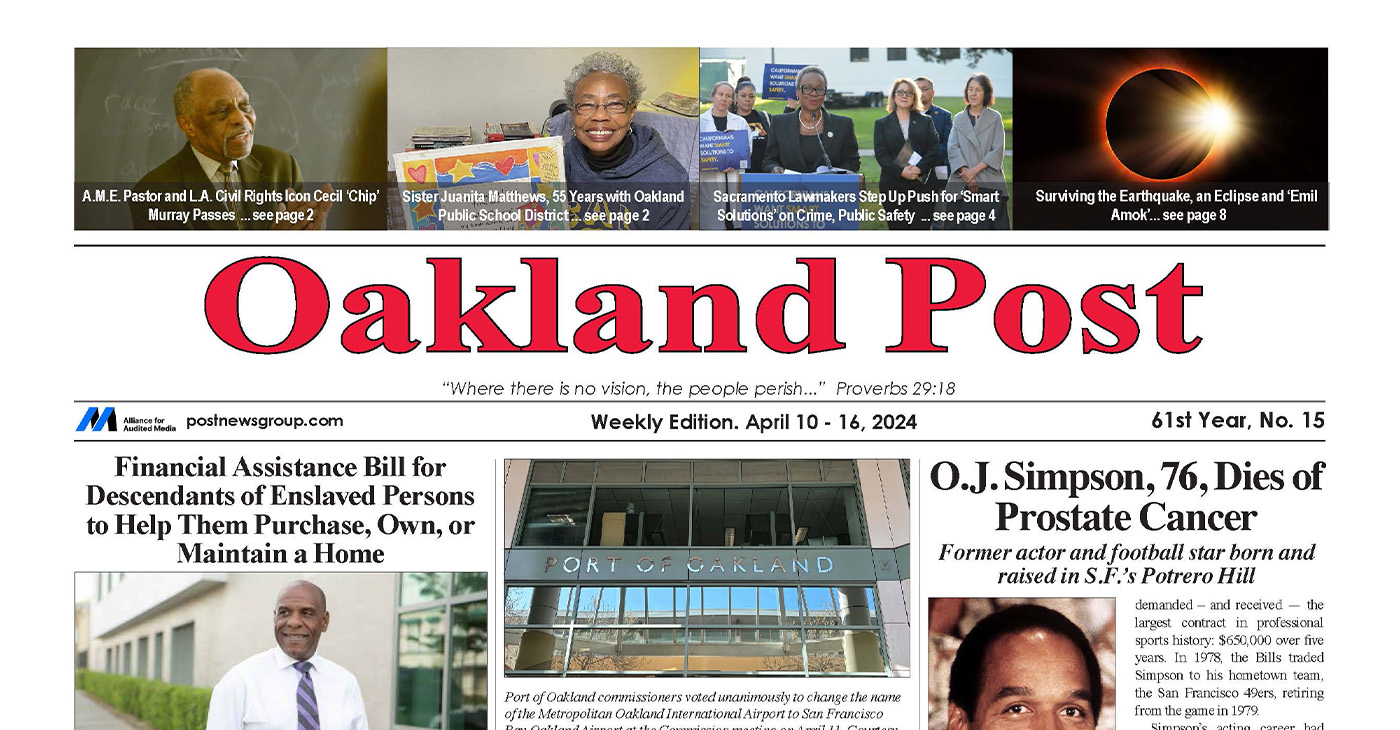Politics
CIA Director Announces Sweeping Reorganization of Spy Agency

In this Dec. 11, 2014 file photo, CIA Director John Brennan speaks during a news conference at CIA headquarters in Langley, Va. Brennan has ordered a sweeping reorganization of the spy agency, an overhaul designed to make its leaders more accountable, enhance the agencys cyber capabilities and shore up espionage gaps exacerbated by a decade of focus on counterterrorism. (AP Photo/Pablo Martinez Monsivais, File)
KEN DILANIAN, AP Intelligence Writer
WASHINGTON (AP) — Director John Brennan has ordered a sweeping reorganization of the CIA, an overhaul designed to make its leaders more accountable and close espionage gaps amid widespread concerns about the spy agency’s limited insights into a series of major global developments.
Brennan announced the restructuring to the CIA workforce on Friday, including a new directorate devoted to boosting the CIA’s computer hacking skills. He said the move comes after nine agency officers spent three months analyzing its management structure, including what deputy CIA director David Cohen called “pain points,” organizational areas where the CIA’s bureaucracy does not work efficiently.
Briefing reporters with Cohen at CIA headquarters this week, Brennan said the changes are necessary to address intelligence gaps that the CIA is not covering. He lamented that there is often no single person he can hold accountable for the spying mission in any given part of the world.
“There are a lot of areas that I would like to have better insight to, better information about, better access to,” Brennan said. “Safe havens, denied areas. Whether because we don’t even have a diplomatic presence in a country, or because there are parts of countries that have been overrun and taken over by terrorist groups and others.”
The changes come against a backdrop of evidence that the CIA’s focus on hunting and killing terrorists since the Sept. 11 attacks has led to an erosion of the espionage and analytic capabilities the agency built during the Cold War. The CIA, along with other U.S. intelligence agencies, wrongly assessed the presence of weapons of mass destruction in Iraq in 2002 and failed to anticipate the rapid collapse of Middle East governments during the Arab Spring in 2011, among other shortcomings.
The agency’s greatest public success of recent years — the 10-year effort to locate and kill Osama bin Laden in 2011 — may have taken longer than it should have, according to evidence made public in the recent Senate report on CIA interrogations. Internal CIA surveys have cited bad management and bureaucratic frustration as factors in driving talent away from the agency.
Under Brennan’s reorganization, the CIA would break down the wall between the operations and analytical arms, a system that typically has required the case officers who recruit spies and run covert operations to work for different bosses, in different offices, than analysts who interpret the intelligence and write briefing papers for the president and other policymakers.
The new plan would blend practitioners of those separate disciplines into 10 centers devoted to various subjects or areas of the world. There are a handful of such centers at the moment, including the Counter Terrorism Center, where analysts and operators have worked side by side for the last decade targeting al-Qaida with espionage and drone strikes.
Under the new plan, each center would be run by an assistant director who would be responsible for the entire intelligence mission within that jurisdiction, including covert operations, spying, analysis, liaison with foreign partners and logistics.
The system of CIA stations, headed by a CIA station chief, will remain in place, Brennan said. Most stations are in U.S. embassies, and various CIA case officers in embassies may be working on different missions for different centers.
The changes do not require congressional approval and will be undertaken within the CIA’s current budget, CIA officials said.
Critics of a blended approach have raised concerns that combining analysts with operators could compromise the objectivity of the analysts, who are tasked with coldly interpreting intelligence in which they have no stake. It may be harder for an analyst to cast doubt on a source recruited by a case officer he knows personally, the theory goes.
The head of the CIA’s operation arm retired abruptly in January after voicing concerns about the plan, say two former CIA officials who know him but spoke on condition of anonymity because they weren’t authorized to discuss internal agency matters. Brennan said the undercover officer’s decision “was not a result of this,” but he did not dispute that the officer had opposed some of the changes.
“Any time we’ve put analysts and operators together, the result has been a more powerful product,” said John McLaughlin, a former CIA analyst who became acting director, and who advised Brennan on the restructuring.
Brennan is retaining the old structure of CIA directorates. But he is changing some names, including restoring the old moniker “Directorate of Operations,” to the spying arm, the name it had before being rebadged the National Clandestine Service in 2005. For analysts, what used to be called the Directorate of Intelligence will be renamed the Directorate of Analysis. Two others, the directorates of support and science and technology, remain.
The directorates will manage human resources and set tradecraft standards, Brennan said, while the centers carry out the intelligence missions.
In another evolution, Brennan is creating a fifth directorate, the Directorate of Digital Innovation, which will focus on the new world of computer networks that has changed the way espionage is conducted. Brennan avoided the term “cyber,” a word used by the National Security Agency, the country’s premier digital spying service. The CIA’s mission of human spying now almost always has a digital component —even something so simple as backgrounding a potential asset by hacking into databases — and Brennan said the agency needs to intensify its focus on it.
The CIA will also significantly boost its leadership training and talent development efforts, which have been compared unfavorably to the military, Brennan said.
The reorganization is already drawing fire from some quarters. Paul Pillar, a former CIA analyst who famously dissented from the case for war in Iraq, expressed concern that the costs of the changes would outweigh the benefits.
“I worry that this plan may be another instance of the all-too-common pattern, among senior managers in both governmental and private sector organizations, to try to leave a personal mark by reorganizing the place,” he said in an email.
Copyright 2015 The Associated Press. All rights reserved. This material may not be published, broadcast, rewritten or redistributed.
Activism
Oakland Post: Week of April 10 – 16, 2024
The printed Weekly Edition of the Oakland Post: Week of April 10 – 16, 2024

To enlarge your view of this issue, use the slider, magnifying glass icon or full page icon in the lower right corner of the browser window. ![]()
Activism
Oakland Post: Week of April 3 – 6, 2024
The printed Weekly Edition of the Oakland Post: Week of April 3 – 6, 2024

To enlarge your view of this issue, use the slider, magnifying glass icon or full page icon in the lower right corner of the browser window. ![]()
Activism
Oakland Post: Week of March 27 – April 2, 2024
The printed Weekly Edition of the Oakland Post: Week of March 27 – April 2, 2024

To enlarge your view of this issue, use the slider, magnifying glass icon or full page icon in the lower right corner of the browser window. ![]()
-

 Activism3 weeks ago
Activism3 weeks agoOakland Post: Week of March 20 – 26, 2024
-

 #NNPA BlackPress3 weeks ago
#NNPA BlackPress3 weeks agoMayor, City Council President React to May 31 Closing of Birmingham-Southern College
-

 #NNPA BlackPress3 weeks ago
#NNPA BlackPress3 weeks agoFrom Raids to Revelations: The Dark Turn in Sean ‘Diddy’ Combs’ Saga
-

 #NNPA BlackPress3 weeks ago
#NNPA BlackPress3 weeks agoCOMMENTARY: D.C. Crime Bill Fails to Address Root Causes of Violence and Incarceration
-

 #NNPA BlackPress3 weeks ago
#NNPA BlackPress3 weeks agoCOMMENTARY: Lady Day and The Lights!
-

 #NNPA BlackPress3 weeks ago
#NNPA BlackPress3 weeks agoBaltimore Key Bridge Catastrophe: A City’s Heartbreak and a Nation’s Alarm
-

 #NNPA BlackPress3 weeks ago
#NNPA BlackPress3 weeks agoBaltimore’s Key Bridge Struck by Ship, Collapses into Water
-

 Activism2 weeks ago
Activism2 weeks agoOakland Post: Week of March 27 – April 2, 2024





































